Understanding the Principles of Off-Page SEO and Its Importance

In today’s complex and competitive web world, #Off-Page_SEO or #Off-Site_Optimization is considered one of the most vital aspects of increasing your website’s visibility and credibility.
Unlike #On-Page_SEO, which focuses on optimizing content and structure within the site, this part of SEO concentrates on activities performed outside your website to improve its ranking in search engines.
The main goal of Off-Page SEO is to increase your domain’s credibility, trust, and authority in the eyes of Google and other search engines.
This optimization includes various strategies primarily focused on acquiring high-quality backlinks from reputable and relevant sites, but beyond that, it also includes brand mentions, social media activity, and even online reviews.
The importance of Off-Page SEO stems from the fact that search engines consider links as votes of confidence from other websites.
The greater the number and quality of these votes, the higher your site’s credibility with search engines, and the greater the chance of ranking higher in search results.
Without a powerful strategy in Off-Page SEO, even the best on-site content may never reach its true potential and could get lost among thousands of other websites.
This is an explanatory and very important topic for any webmaster seeking long-term success in the online space.
A correct understanding of these principles and their step-by-step implementation is the key to reaching top positions in search results and attracting stable organic traffic.
Therefore, no SEO plan will be complete without serious attention to Off-Page SEO.
This approach forms the foundation for building a strong and sustainable online presence.
Are you bothered by losing customers who have visited your site to make a purchase?
RasaWeb is your specialized solution for a successful online store.
✅ Significant increase in your online sales
✅ Building trust and professional branding with customers⚡ Get free consultation from RasaWeb experts!
The Main Pillars of Off-Page SEO: Building Powerful Backlinks
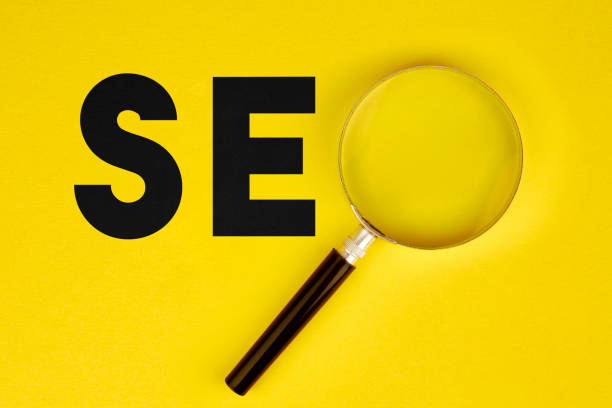
Off-Page SEO relies on several main pillars, each contributing to increasing your site’s authority and ranking.
The most important and influential of these pillars is, without a doubt, backlinks.
A backlink, or inbound link, is a link that points from another website to your website.
Search engines consider backlinks as a vote of confidence or an endorsement of quality from other sites.
The more reputable, relevant, and authoritative the website linking to you is, the more valuable that backlink will be for your Off-Page SEO.
The quality of backlinks is far more important than their quantity; one high-quality backlink from a reputable site can be much more effective than dozens of low-quality backlinks from spammy or irrelevant sites.
The second pillar is Brand Mentions.
Even if your brand name is mentioned on other websites without a direct link to you, search engines can understand these mentions and consider them as a sign of your brand’s popularity and credibility.
These mentions significantly help strengthen Off-Page SEO.
The third pillar is social media signals.
Although shares and likes on social media are not direct ranking factors, they can help increase the visibility of your content, attract traffic, and ultimately increase the likelihood of receiving natural backlinks.
For example, popular content on Twitter or LinkedIn might be seen by bloggers or media outlets, leading to links to it.
This is an important educational aspect that shows Off-Page SEO goes beyond mere link building and relates to your overall online presence ecosystem.
Understanding these pillars and investing in each of them is essential for improving your Off-Page SEO performance.
Modern Methods of Acquiring Quality Backlinks for Off-Page SEO
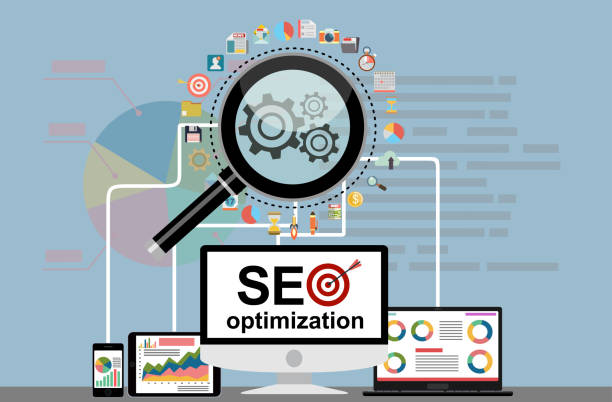
Acquiring high-quality backlinks forms the core of Off-Page SEO, and to achieve it, there are several modern and ethical methods that must be carefully implemented.
One of the most effective methods is Guest Blogging.
In this method, you write high-quality content for another website in a field related to your business, and in return, you receive a link to your site.
It is important that the host website has high authority and a relevant audience.
Another approach is Broken Link Building.
In this technique, you search for broken links (404) on authoritative websites in your niche, then contact the webmaster of that site and suggest replacing the broken link with your content (which is a suitable alternative).
This method is a win-win; the host website solves its problem, and you get a backlink.
Competitor analysis is also a specialized and very important strategy.
By using tools like Ahrefs or Moz, you can examine the backlink profile of your successful competitors and identify their link sources.
This gives you ideas for finding new link-building opportunities.
Creating Linkable Assets is also very effective.
This content can include infographics, case studies, free tools, original research, or comprehensive guides that are so valuable that other websites naturally link to them.
This is a guidance and very sustainable method for improving Off-Page SEO.
| Backlink Type | Description | Impact on Off-Page SEO |
|---|---|---|
| Editorial Link | A link naturally placed within relevant content. | High (Highly valuable) |
| Links from Reputable Directories | A link obtained from high-quality, hand-picked web directories. | Medium |
| Links from Social Media | Links placed in social media profiles or posts (often NoFollow). | Low (Mostly for traffic and brand mentions) |
| Links from Comments/Forums | Links placed in blog comments or forums (often NoFollow or spam). | Very Low (High risk) |
| Links from News/Press Sites | Links published in newsletters, news articles, or press releases. | High (Highly valuable) |
The Importance of Anchor Text in Off-Page SEO Optimization
Anchor text, or the clickable words in a link, guides users from one page to another.
The role of anchor text in Off-Page SEO is crucial, as it helps search engines understand the topic of the destination page.
For example, if your link with the anchor text “buy laptop” points to your laptop products page, Google understands that the destination page is about buying laptops and ranks it for related searches.
There are various types of anchor text, and using them correctly and diversely is essential for a natural and healthy backlink profile: Exact Match anchor text, which is precisely your target keyword; Partial Match anchor text, which includes your keyword along with other words; Branded Anchor text, which is just your brand name; Naked URL anchor text, where the site’s address itself is the link; and Generic anchor text, such as “click here” or “read more”.
One of the biggest mistakes in Off-Page SEO is the overuse of exact match anchor text (over-optimization).
This can be considered an attempt to manipulate search results and lead to penalties from Google.
The best approach is to diversify anchor texts so that your link profile appears natural and organic.
This diversity indicates that your links are created from various sources and with different purposes, not solely to improve the ranking of a specific keyword.
This is a very important educational point that must be considered in any search engine optimization strategy.
The greater the anchor text diversity, the lower the risk to your website, and its long-term credibility will be maintained.
Is your online sales not as expected? With RasaWeb, solve the problem of low sales and poor user experience forever!
✅ Increase visitor-to-customer conversion rate
✅ Create a pleasant user experience and increase customer trust
⚡ Act now for a free consultation!
The Role of Social Networks and Brand Mentions in Off-Page SEO

In today’s world, active presence on social media and managing brand mentions are integral parts of Off-Page SEO, although their direct impact on ranking is a debatable topic.
Search engines like Google have stated that social media likes, shares, and followers are not direct ranking factors.
However, their indirect impact on Off-Page SEO is undeniable.
Firstly, social media activity can lead to increased visibility of your content.
When your content is shared and interacted with on platforms like Instagram, LinkedIn, Twitter, or Facebook, the likelihood of it being seen by influencers, bloggers, and journalists increases.
This increased visibility can naturally lead to acquiring high-quality backlinks from reputable and relevant sites.
This provides a natural flow of social signals and backlinks for your Off-Page SEO.
Secondly, Brand Mentions play a very important role.
When your brand or company name is mentioned on websites, news articles, forums, or even social media without a direct link, search engines understand these mentions and consider them as a sign of your brand’s credibility and popularity.
These signals help increase your Domain Authority and show Google that your brand is recognized and discussed in its respective industry.
This can help improve your ranking in branded and non-branded searches.
In summary, social media and brand mentions play a significant supportive role in your comprehensive Off-Page SEO strategy by generating traffic, increasing brand awareness, and stimulating natural backlinks.
This is a news-related and constantly evolving area that requires continuous attention and monitoring.
Differences and Tips for Local Off-Page SEO for Physical Businesses
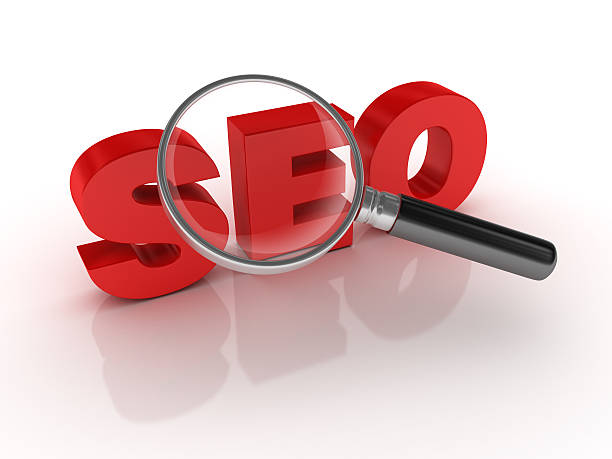
While the general principles of Off-Page SEO apply to all websites, local businesses with a physical presence need specific approaches to local Off-Page SEO.
The main goal of local Off-Page SEO is to increase business visibility in local search results and Google Maps.
The most important difference is the focus on Local Citations.
Local citations refer to the mention of your business’s Name, Address, and Phone number (NAP) on other websites, online directories, and review platforms.
The more widely and consistently this information appears across reputable and diverse sources, the more Google trusts your business’s credibility and physical presence.
Registering and optimizing your Google My Business (GMB) profile is crucial from a local Off-Page SEO perspective.
This profile allows customers to post their reviews about your business.
Positive reviews and a high number of them are strong signals for Google, indicating the popularity and quality of your services.
Actively responding to reviews, both positive and negative, also helps engage with customers and build trust.
In addition to GMB, acquiring backlinks from relevant local websites (such as local newspapers, regional blogs, local chambers of commerce) plays an important role in strengthening the Off-Page SEO of a physical business.
These types of links show Google that your business is connected and relevant to its local community.
This specialized and guidance approach helps local businesses stand out among competitors and attract more local customers.
Remember that consistency in NAP information across all platforms, even in small details, is of high importance.
Advanced Off-Page SEO Strategies and Specific Techniques
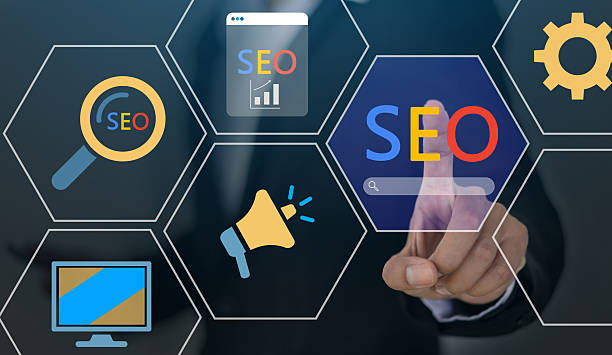
Beyond the basics, there are advanced Off-Page SEO strategies that can help you stand out in today’s fierce competition.
One such technique is the Skyscraper Technique.
In this method, you first find a very high-quality and comprehensive piece of content (e.g., a long article) in your niche that has already performed well.
Then, you create a new, significantly better, more complete, and more updated version of that content.
Finally, you contact websites that linked to the original content and suggest your superior content as a better alternative.
This analytical method requires significant effort but yields very impressive results in Off-Page SEO.
Another method is Resource Page Link Building.
Many websites create pages to showcase useful resources in their field.
You can identify these pages in your niche, email their webmaster, and suggest your high-quality and valuable content to be added to their resource list.
This technique requires truly useful content without direct promotional aspects.
Ego Bait is also an engaging and effective strategy.
In this method, you highlight or praise influential individuals or companies in your content (e.g., in an article titled “100 Influential People in Industry X”), hoping that they will see your content and link to it or share it on their social media.
Additionally, using Press Releases through reputable news distribution platforms can help attract links from news sites and increase brand mentions, provided your news is genuinely newsworthy.
These specialized strategies are designed to strengthen your backlink profile and, consequently, significantly improve your site’s off-page SEO.
| Metric | Description | Importance for Off-Page SEO |
|---|---|---|
| Domain Authority/Rating | A score predicting the overall strength of a domain (usually from 1 to 100). | High (Links from high DA domains are more valuable) |
| Page Authority/Rating | A score predicting the strength of a specific page. | High (Links from high PA pages are very beneficial) |
| Spam Score | The likelihood of a domain being spam (from 0 to 100 percent). | Very High (Links from spam sites are harmful) |
| Referring Domain Diversity | The number of unique domains that have linked to your site. | High (Indicates a natural link profile) |
| Follow/NoFollow Type | Follow links pass authority, NoFollow links do not. | Medium (A mix of both is natural) |
Tools for Monitoring and Analyzing Your Website’s Off-Page SEO Performance
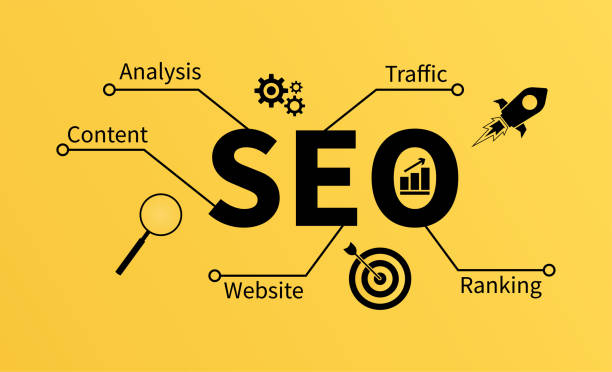
For success in Off-Page SEO, merely creating backlinks is not enough; continuous monitoring and analysis of link performance and competitors are equally important.
Various tools are available in the market that provide valuable information about your and your competitors’ backlink profiles.
One of the most prominent of these tools is Ahrefs, known for its massive backlink database.
Ahrefs allows you to examine your site’s backlinks, identify broken links, analyze your competitors’ link profiles, and discover their keywords.
This tool provides you with deep analytical insights to improve your Off-Page SEO strategy.
Another powerful tool is Moz (with Link Explorer tool).
Moz offers its own metrics like Domain Authority (DA) and Page Authority (PA), which are good predictors of a domain’s or page’s ranking power.
Using Moz, you can evaluate the credibility of inbound links and view the Spam Score of linking domains to avoid harmful links.
SEMrush is also a comprehensive SEO tool with a powerful section for backlink analysis.
This tool helps you monitor new and lost links, examine anchor text distribution, and find new link-building opportunities.
Using these specialized tools is essential for identifying the strengths and weaknesses of your Off-Page SEO strategy.
They allow you to not only manage your links but also stay informed about your competitors’ activities and apply their successful patterns to improve your own status.
Also, with regular monitoring, you can identify any suspicious or spammy links and take necessary steps to disavow them to prevent potential Google penalties.
This continuous monitoring is an integral part of a successful off-page SEO strategy.
Tired of your company’s website not being seen as it should, and losing potential customers? With professional and effective website design by RasaWeb, solve this problem forever!
✅ Increase brand credibility and gain customer trust
✅ Attract targeted sales leads
⚡ Contact us now for a free consultation!
Common Mistakes in Off-Page SEO and How to Avoid Them

On the path to optimizing Off-Page SEO, mistakes can occur that not only fail to improve ranking but can also lead to penalties from search engines.
Understanding these mistakes and avoiding them is crucial for a sustainable Off-Page SEO strategy.
One of the most common and dangerous mistakes is buying links or participating in link schemes.
Google strongly combats the buying and selling of links, and any attempt to artificially manipulate a link profile can lead to manual penalties and a significant drop in ranking.
Instead of buying, you should focus on natural link acquisition through high-quality content.
Another mistake is ignoring quality in favor of quantity.
Some webmasters try to acquire as many backlinks as possible, regardless of the authority or relevance of the linking sites.
Low-quality links from spammy, irrelevant, or low-authority sites are not only unhelpful but can be harmful.
This is a very important guidance point: always prefer quality over quantity.
Lack of anchor text diversity is also a common error, as mentioned before.
Repeatedly using a single exact match anchor text for all links is a red flag for search engines and is considered an attempt to manipulate keywords.
Diversity in anchor texts makes your link profile appear more natural.
Furthermore, fast and unnatural link building can be dangerous.
A sudden increase in a large number of backlinks within a short period looks unnatural and can be a sign of manipulation.
The link-building process should be slow and steady.
Neglecting broken links on your own site or failing to monitor inbound links and disavow harmful links are also common mistakes.
These can be considered questionable content that should be avoided so that your Off-Page SEO always stays on the right track.
Future Trends in Off-Page SEO and Best Practices
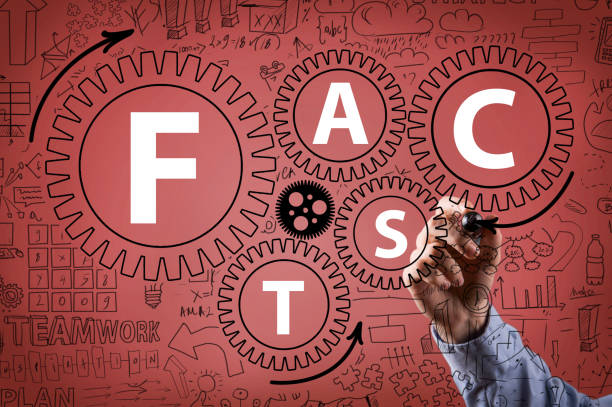
The world of SEO and search engine optimization is constantly changing and evolving, and Off-Page SEO is no exception.
To maintain an edge and achieve long-term success, familiarity with future trends and adherence to best practices are essential.
One of the most important future trends is the increased emphasis on Expertise, Authoritativeness, and Trustworthiness (E-A-T).
Google is increasingly looking for sources that demonstrate knowledge, experience, authority, and trustworthiness in their field.
This means that backlinks from truly authoritative and specialized sources will gain more importance.
Instead of trying to acquire just any link, you should focus on link building from authoritative websites and experts in your industry.
Another trend is the increasing role of artificial intelligence in understanding links.
Google’s algorithms are becoming smarter and can more accurately determine the quality and true relevance of a link.
This means that links created naturally due to the high value of your content will be far more valuable than links built solely for SEO purposes.
Therefore, investing in producing specialized, in-depth, and unique content that naturally deserves linking will be the most important strategy for the future of Off-Page SEO.
Best practices in the future include focusing on Digital PR, connecting with media and influencers to acquire brand mentions and high-quality links, and also continually creating and promoting shareable and linkable content.
Off-Page SEO in the future will be more about building a brand and online reputation than merely playing with algorithms.
This is an interesting and yet realistic view of the future of this field, requiring a comprehensive and ethical approach to off-page optimization.
Frequently Asked Questions
| Row | Question | Answer |
|---|---|---|
| 1 | What is Off-Page SEO? | Off-Page SEO refers to a set of actions performed outside your website to improve its ranking in search engines. These actions include backlink building, social media presence, branding, and so on. |
| 2 | Why is Off-Page SEO of high importance? | Off-Page SEO shows search engines that your website is reputable, popular, and trustworthy. High-quality backlinks from authoritative sites are strong signals for better ranking and help increase your domain’s authority. |
| 3 | What are the most important components of Off-Page SEO? | The most important components of Off-Page SEO include: Link Building, Content Marketing, Social Media Marketing, Influencer Marketing, and Online Reputation Management. |
| 4 | What is a backlink and why is it important for Off-Page SEO? | A backlink is a link from another website that points to your website. These links act as “votes of confidence” from Google’s perspective, indicating the credibility of your content. The more numerous and higher quality the backlinks, the better your site’s ranking will be. |
| 5 | What are the types of backlinks in terms of SEO impact? | The two main types of backlinks are DoFollow and NoFollow. DoFollow backlinks pass authority (Link Juice) and directly impact ranking. NoFollow links do not pass authority but can still generate traffic and help make a link profile appear natural. (Also UGC and Sponsored) |
| 6 | How can one create high-quality backlinks for their website? | To build high-quality backlinks, one can use methods such as: producing excellent and shareable content, guest posting on relevant and reputable sites, broken link building, Digital PR, and analyzing competitor backlinks. |
| 7 | What are Toxic Backlinks and how do they affect a site? | Toxic or spam backlinks are links that point to your site from low-quality, spammy, or irrelevant websites. These backlinks can harm your site’s ranking and even lead to penalties by Google’s algorithms. |
| 8 | What is the role of social networks in Off-Page SEO? | Although social signals (likes, shares, etc.) are not direct ranking factors, they do contribute to Off-Page SEO. They increase content visibility, drive direct traffic to the site, and ultimately boost the chance of acquiring natural backlinks and improving brand recognition. |
| 9 | What is the importance of diversity in a backlink profile? | Diversity in a backlink profile means that your links come from various sources (blogs, forums, news sites, directories), with diverse anchor texts, and include a mix of DoFollow and NoFollow links. This diversity indicates to Google that your link building is natural and organic. |
| 10 | What are common mistakes in Off-Page SEO that should be avoided? | Common mistakes include: buying backlinks in high volume and from low-quality sources, over-optimization of keywords in link building, ignoring quality in favor of quantity in backlink building, lack of diversity in the link profile, and neglecting toxic backlinks and failing to disavow them. |
And other services of RasaWeb advertising agency in the field of advertising
Smart Sales Automation: Designed for businesses seeking customer behavior analysis through SEO-driven content strategy.
Smart Conversion Rate Optimization: A combination of creativity and technology to increase website visits through attractive UI design.
Smart SEO: An effective tool for customer acquisition through the use of real data.
Smart Data Analysis: A professional solution for customer acquisition with a focus on attractive UI design.
Smart Advertorials: A dedicated service for improving SEO ranking growth based on user experience customization.
And over hundreds of other services in the field of online advertising, advertising consultation, and organizational solutions
Online Advertising | Advertising Strategy | Advertorials
Sources
Complete Guide to Off-Page SEO and Its Importance
Off-Page SEO Strategies to Improve Website Ranking
Important Tips for Building Backlinks for SEO
How to Increase Website Traffic with Off-Page SEO?
? For your business’s leap in the digital world, RasaWeb Afarin Digital Marketing Agency, specializing in fields such as WordPress website design, SEO, and content marketing, offers innovative and targeted solutions.
📍 Tehran, Mirdamad Street, next to Bank Markazi, Southern Kazeroon Alley, Ramin Alley, No. 6




